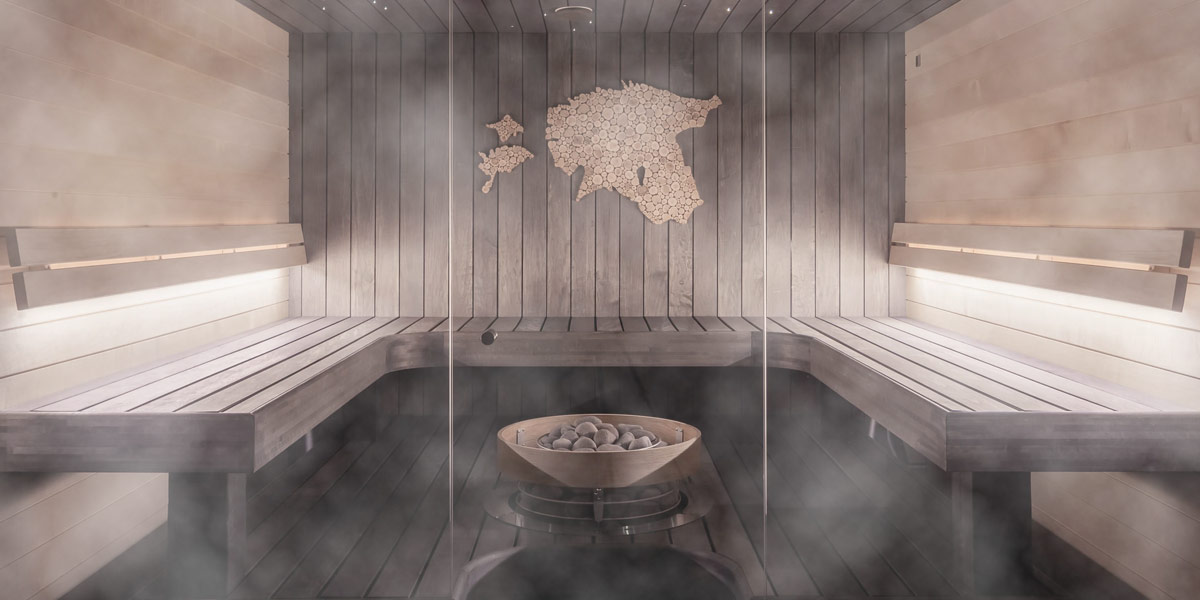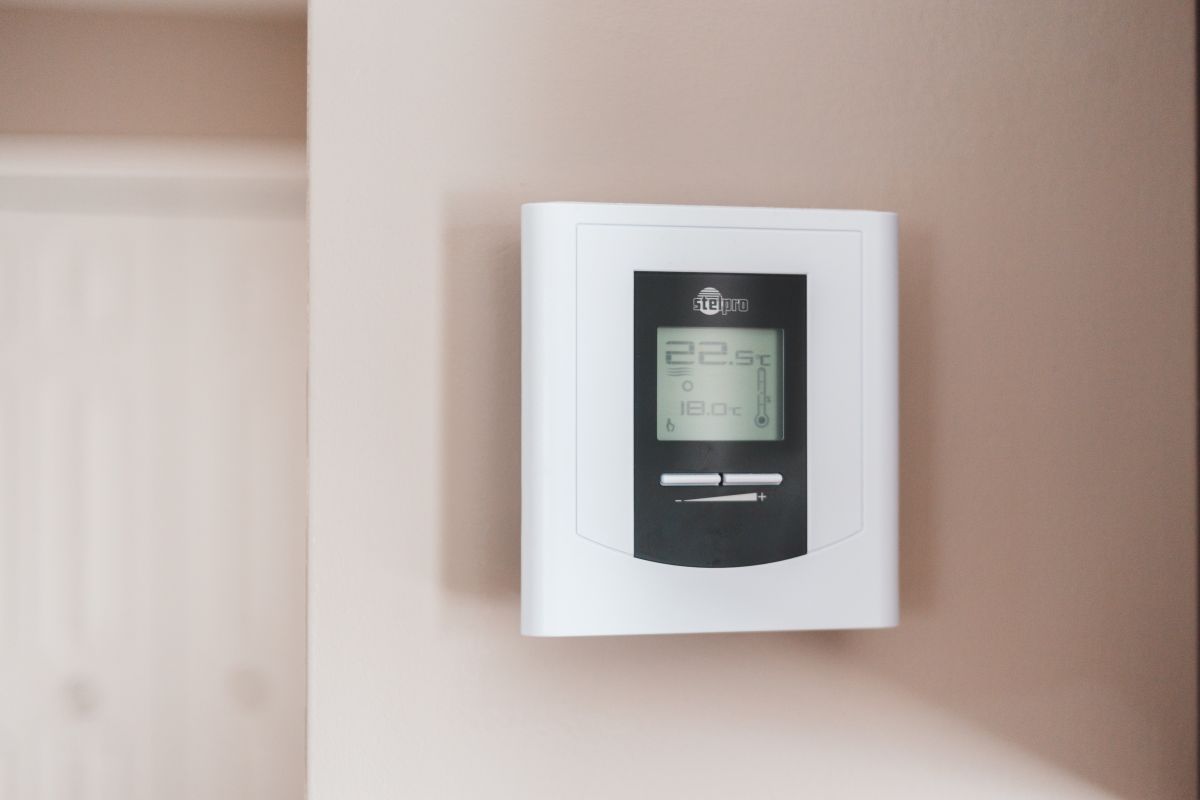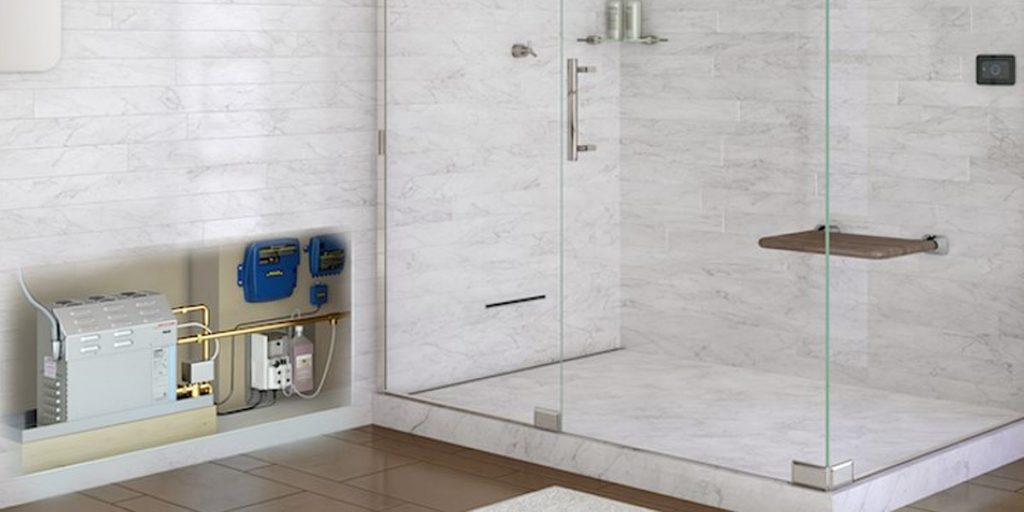Is a portable sauna or a steam room more appealing as you prepare to begin on the road to relaxation and wellness? Health and fitness fans have been fascinated by the centuries-old debate between saunas and steam rooms. Which one is the pinnacle of stress relief, cleansing, and revitalisation? This article demystifies these health havens and points you toward the facility that best meets your requirements.
Deciding between a portable sauna and a steam room boils down to personal preference and health objectives. Saunas, which generate dry heat, are popular for their beneficial effects on relaxation, muscle healing, and purification. However, a steam room's moist, steamy environment does wonders for the respiratory system and the skin. When deciding, things like your health goals, the amount of space you have, and your comfort level should all be considered. Let's go deeper into portable saunas and steam rooms to confidently assist you in taking the next step in your wellness journey.
How Are Infrared Saunas And Steam Rooms Different?
You're familiar with steam saunas and have tried them before. Infrared saunas, on the other hand, are less widespread, and even if you frequent the steam room, you might not know much about them. Despite their similarities, understanding the subtle distinctions between the two can help you choose the option that best meets your needs and preferences.
If you find the heat and humidity of a typical sauna (or steam room) too harsh and uncomfortable, or if you have any other issues, infrared saunas may be the solution you've been looking for.
What Exactly Are Steam Rooms?
Nonporous building elements like glass and tile are used to create an airtight space in which to steam in a sauna. A steam generator is set up to boil water and produce a humid setting. The extreme heat and humidity in steam rooms can raise the body temperature by as much as 10 degrees Celsius.

Humidity in a sauna varies widely. A Finnish steam sauna is known for its dry heat and relatively high humidity (10-20%). On the other hand, the humidity in a typical Turkish sauna is substantially higher. The higher the humidity, the hotter the steam chamber will feel; some of them can reach 100% humidity.
The skin temperature in a steam chamber can rise to about 40 degrees Celsius. As the body's temperature rises, it sweats heavily and profusely. The body's natural response to overheating is an increase in heart rate. Steam rooms heat the air around you, resulting in radiant heat.
What Are Infrared Saunas?
The infrared heaters in an infrared sauna can reach temperatures as high as 70 degrees Celsius but are typically set between 45 and 55 degrees Celsius to induce an oil sweat. The term "infrared" describes the wavelength of light energy that is harmless to people because it occurs in the environment.
Sensitise your sense of touch to infrared heat from sources such as a campfire or the sun-warmed sand at the beach. When we feel warm, the invisible infrared wavelength comes from the sun, the largest and most noticeable source of infrared heat. Three types of waves with distinct frequencies and wavelengths make up a full-spectrum infrared sauna.
- Light in the infrared spectrum, including the near-infrared, the mid-infrared, and the far infrared.
Like the sun's rays, the infrared rays used in infrared saunas penetrate deeply into the body to warm it from the inside out. Infrared rays are an efficient and healthy way to heat the body from the inside out.
Pros And Cons Of Using An Infrared Sauna Or Steam Room
Wellness havens, infrared saunas and steam rooms have been celebrated for a long time. They can take you to a place of peace and renewal in minutes. However, they are more complex than they appear. Solid evidence is that these therapeutic chambers can greatly improve one's health.
Their advantages are as varied as they are astounding, ranging from cleansing the body, enhancing cardiovascular health, and relieving muscle stress to encouraging glowing skin and boosting mood.
Pros Of Sauna
You can relax in the heat for a time inside a sauna. It has a long history of use as a treatment for anxiety and other health issues. The popularity of modern saunas has grown in recent years, and more and more people are using them for spa or therapeutic purposes. Each variety of sauna has its special advantages. They are versatile enough to be enjoyed indoors, outdoors, or even on the lake. The calming and pleasant atmosphere benefits the body and mind, enhancing relaxation, mood, and blood flow.
- Higher levels of blood flow. In a sauna, blood arteries dilate to increase blood flow as core temperature rises. Also, your blood pressure is going up. Improved circulation is the result of all of these factors interacting favourably. An increase in nutrient-rich blood flow from the heart out to the extremities and back again might have further beneficial effects on health. Increasing the frequency with which cardiovascular exercise is performed has many benefits.
- A shorter time spent recuperating from strenuous exercise. People who exercise frequently or intensely may benefit more from infrared sauna use. The infrared light from infrared saunas may penetrate deeply into muscle tissue, which may hasten damaged cells' healing and regeneration. As a result, an infrared sauna may be just what the post-workout doctor prescribed if your muscles are completely spent.
- Taking some time out to relax and clear one's head. You may enjoy an infrared sauna for up to twice as long as you would in a steam room, making them the clear winner. Some people respond quite favourably to increased thermal comfort. Saunas have been linked to improvements in both physical and mental health. Saunas are the perfect setting for meditation solo or with a teacher.
- Sweating out the toxins. A purifying sweat that opens pores and flushes the body of toxins may result from the low humidity in saunas.
Cons of Sauna
A home sauna will take up some room in your house no matter where you decide to put it. An indoor sauna may be impractical for those with smaller homes. There is a great assortment of outdoor saunas if, by some miracle, you have a modest house with a sizable yard.
Due to the extreme temperatures, children and pregnant women should avoid using saunas. Pregnant women may experience difficulties, and children who cannot properly control their body temperatures will suffer. Furthermore, prolonged sauna use has been linked to temporary male infertility.
Those who are easily overheated may find the sauna to be unbearable. In this scenario, the individual should decide whether they like a steam sauna or a dry sauna and then select either a steam sauna or an infrared sauna.
Pros of Steam Room
Steam rooms are more analogous to bathtubs than saunas since they employ wet heat from steam to warm their users rather than the dry heat used in saunas. The water in a traditional steam chamber is boiled to create steam, making the room extremely hot and steamy.
However, hot water is poured over hot stones in certain steam rooms to generate steam and a unique scent. Steam chambers typically reach temperatures of 100–115 degrees Fahrenheit. The relaxing and soothing effects of a steam room are comparable to those of a sauna, yet the experience is entirely different. Several benefits include the following:
- There is now less traffic. A steam room is preferable to a sauna for clearing stuffy noses and other nasal congestion. The nasal passages can be cleared, and the upper respiratory tract can be lubricated by inhaling steam. Simply put, this means that the obstructions in your nasal passages have been removed, which could result in the disappearance of your congestion. The fact that some steam rooms add eucalyptus or other essential oils to the water makes a big difference, too.
- Soothing anxious minds and knotted muscles. The heat will help loosen your muscles and naturally open up your blood vessels. Some people look up to their monthly visit to the steam room because they find it so calming, especially when essential oils are added.
- Improved circulation. The humid heat of a steam room can boost circulation all across the body. As was noted in the section about the benefits of saunas, this may also have the additional benefit of increasing the amount of oxygen-rich blood flowing to the brain and other vital organs.
Cons of the Steam Room
Dehydration is a real risk if you spend over 15 minutes in a steam room. Due to the high humidity, it may be more challenging to recognise the symptoms of dehydration and remember to drink additional water.
Unsanitary steam rooms can harbour a wide variety of microorganisms. A steam room's heat isn't adequate to eradicate bacteria and viruses and may even encourage their growth. Preventing this requires extensive cleaning and upkeep. If you have heart problems or low blood pressure, you shouldn't use a steam room since it might raise your heart rate to a hazardous level and make you feel dizzy and weak.
How Steam Makes A Difference?
Steam is a key component of a typical sauna's steam room. Due to the high humidity caused by the steam, the temperature rises even further. The result is even more profuse perspiration. The goal of both infrared and regular saunas is the same: to induce sweating and remove toxins and waste from the body. But the high temperatures and humidity levels required to produce the sweat are unpleasant. That's why most individuals can only spend 20 minutes max in a steam room at a time. Furthermore, the powerful steam may amplify or aggravate preexisting conditions associated with the eyes or lungs.
However, regular sauna steam has beneficial effects, such as dilating air passages and clearing sinuses. Because it can help open pores and cleanse the skin from the inside out, steam is often recommended for those with complexion problems.
Considerations For Sauna Or Steam Room Selection
There are benefits and drawbacks to both saunas and steam rooms. Which one should you pick, a sauna or a steam room? Here are some things to think about before you make a final choice:
- Heat control: You can use electricity, wood, or infrared panels to create a toasty sauna environment. The intensity of your session's heat can be adjusted in this way. Some prefer a sauna's dry heat over a steam room's humid heat.

- The temperature: Generally, saunas tend to be warmer than steam rooms. A sauna is the way to go if you want to feel the heat more intensely. If you prefer milder temperatures, a steam room could be right up your alley.
- The humidity: The humidity of a steam room dwarfs that of a sauna. A steam room is preferable to a regular sauna if you have breathing problems or want a less drying experience. If you prefer dry heat, a sauna can be perfect for you.
- Time commitment: Time spent in a sauna is more involved than in a steam room. If you're pressed for time but still need to warm up a steam room is the way to go. If you want to unwind longer, though, a sauna may be the way to go.
- Expenses: Since saunas don't use as much water as steam rooms, they're typically more cost-effective. A sauna could be the way to go for those on a tight budget.
It's all up to your tastes and requirements. Consider the details as mentioned above, and base your final choice on what will provide you with the most satisfying experience.
FAQs About Sauna
A portable sauna is a compact, self-contained unit that uses dry heat to create a sauna-like experience. On the other hand, a steam room produces moist heat using a steam generator. The primary difference lies in the type of heat they use.
Both options offer potential benefits like relaxation, improved circulation, detoxification, and stress relief. Saunas offer dry heat benefits, while steam rooms provide humid heat benefits, such as clearing respiratory passages.
Both options can aid in detoxification through sweating, but saunas are often considered more effective due to the intense dry heat. Sweating in a sauna may help eliminate toxins through the skin more efficiently.
Both portable saunas and steam rooms can contribute to temporary weight loss through sweating, but this is mostly water weight. Neither is a long-term solution for weight loss; they should be complemented by a balanced diet and regular exercise.
Individuals with cardiovascular issues should consult a doctor before using either a portable sauna or a steam room due to the increased heart rate and potential dehydration. Those with respiratory conditions might find steam rooms more soothing for their airways.
Conclusion
Whether you choose a movable sauna or a steam room depends on your preferences and health goals. Saunas make dry heat, which is popular because it can help you relax, heal your muscles, and clean your body. But steam rooms have a wet, steamy atmosphere that is good for the skin and lungs.
On the other hand, infrared saunas are not as common and are not as common. They are less harsh and painful, and they can raise the body temperature by up to 10 degrees Celsius. Infrared saunas use light waves called infrared rays to heat the body from the inside out.
Infrared saunas have many benefits, such as a relaxing atmosphere, better blood flow, less time needed to recover from hard exercise, more time to rest, and purifying sweat. They are flexible and can be used inside, outside, or even on the lake.
Using an infrared sauna or steam room can make you feel more stressed, raise your blood pressure, speed up your healing time, make you feel warmer, and sweat out toxins. Infrared saunas can also help with relieving stress, improving heart health, relieving muscle stress, and improving your happiness.
In the end, the right sauna or steam room for you relies on your preferences and health goals. Infrared saunas are a better way to relax and feel better, while steam rooms are a more comfy and effective way to do the same.
Saunas are popular in many places, but they don't always work well in smaller homes. Children and pregnant women should stay away from saunas because of the high temperatures and because long-term use can make men temporarily unable to have children. On the other hand, steam rooms use wet heat from steam to warm people up. This makes steam and a unique smell. Most of the time, they get to between 100 and 115 degrees Fahrenheit.
There are many benefits to using a steam room, such as cutting down on traffic, calming anxious thoughts and muscles, and improving circulation. But they can also cause dehydration, contain germs, and make you feel weak and dizzy. A key part of a normal sauna's steam room is steam, which causes high humidity and more sweating.
Steam is important because it makes you sweat and gets rid of waste and toxins, but it can be unpleasant and make problems worse if you already have them. Regular sauna steam has good effects, like opening up the airways and clearing out the lungs. People with skin problems are often told to try it.
When deciding between a sauna and a steam room, you should think about how you want to control the heat, the temperature, the humidity, how much time you have, and how much it will cost. In general, saunas are cheaper, which makes them good for people on a tight budget. In the end, the choice between a sauna and a steam room comes down to your personal tastes.
Content Summary
- The choice between a portable sauna and a steam room is a matter of personal preference and health goals.
- Saunas generate dry heat and are known for relaxation, muscle healing, and purification.
- Steam rooms offer benefits to the respiratory system and skin due to their moist environment.
- Factors like health goals, available space, and comfort level should guide your decision.
- Infrared saunas are less common than steam saunas.
- Infrared saunas may be suitable for those who find typical saunas too harsh.
- Steam rooms use nonporous materials like glass and tile to create an airtight space.
- A steam generator in a steam room boils water to produce a humid setting.
- The temperature in steam rooms can raise body temperature by up to 10 degrees Celsius.
- Finnish steam saunas are known for their dry heat and 10-20% humidity.
- Turkish saunas have much higher humidity, sometimes reaching 100%.
- The skin temperature in a steam chamber can rise to around 40 degrees Celsius.
- Steam rooms heat the surrounding air, resulting in radiant heat.
- Infrared saunas use heaters that can reach up to 70 degrees Celsius.
- The term "infrared" refers to a wavelength of light energy that is naturally occurring and harmless.
- Infrared heat can be felt from sources like campfires or sun-warmed sand.
- The sun is the primary source of infrared heat that we feel.
- A full-spectrum infrared sauna comprises three types of waves: near-infrared, mid-infrared, and far infrared.
- Infrared rays penetrate the body, warming it from the inside out.
- Both infrared saunas and steam rooms have been celebrated for their wellness benefits.
- These therapeutic chambers can significantly improve health.
- Benefits range from body cleansing and cardiovascular health to muscle stress relief and mood enhancement.
- Modern saunas have grown in popularity for spa and therapeutic purposes.
- Saunas can be enjoyed indoors, outdoors, or even on lakes.
- Saunas enhance relaxation, mood, and blood circulation.
- Increased blood flow in saunas can have multiple health benefits.
- Infrared saunas can help in faster recovery from strenuous exercise.
- Saunas are ideal for meditation and mental relaxation.
- The low humidity in saunas can lead to a detoxifying sweat.
- Home saunas require space, making them impractical for smaller homes.
- Pregnant women and children should avoid saunas due to potential risks.
- Some individuals might find the heat of saunas unbearable.
- Steam rooms use wet heat, making them different from saunas.
- Some steam rooms use hot water poured over stones to produce steam.
- Steam rooms can help clear nasal congestion.
- Essential oils added to steam rooms can enhance the experience.
- The humid heat of steam rooms can improve body circulation.
- Spending too long in a steam room can lead to dehydration.
- Steam rooms require extensive cleaning to prevent bacterial growth.
- Steam rooms can raise heart rates, potentially causing dizziness.
- Steam increases the humidity and temperature in a sauna.
- Both infrared and regular saunas aim to induce sweating and detoxification.
- Steam can help in dilating air passages and clearing sinuses.
- Steam is recommended for those with skin complexion issues.
- Saunas offer heat control through electricity, wood, or infrared panels.
- Generally, saunas are warmer than steam rooms.
- Steam rooms have much higher humidity than saunas.
- Saunas require a longer time commitment than steam rooms.
- Saunas are typically more cost-effective than steam rooms.
- The final choice between a sauna and a steam room should be based on individual preferences and needs.






